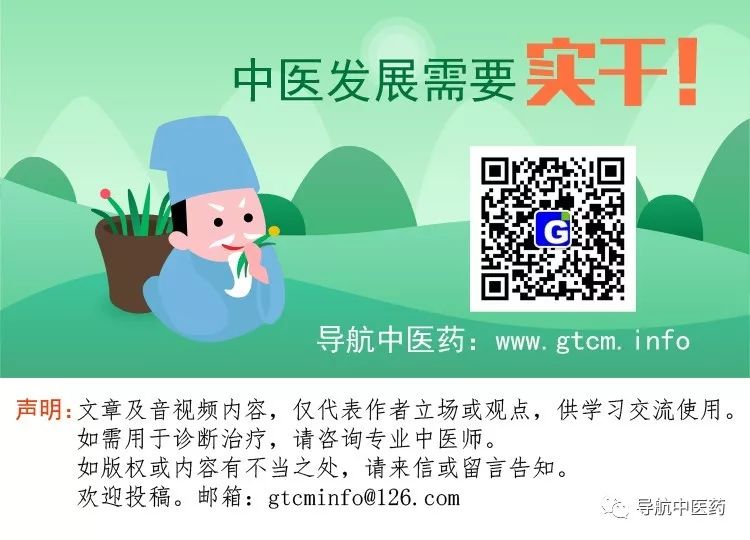Inquiry is one of the four diagnostic methods in Traditional Chinese Medicine (TCM), which has been highly valued by physicians throughout history. The Neijing states, “To know through inquiry is the skill of a physician,” meaning that a doctor who can understand and grasp the condition through inquiry is a highly skilled practitioner. Generally, only through inquiry can one comprehensively understand the occurrence, development, and treatment of diseases, thus providing a basis for diagnosis and treatment. This is especially important for patients with complex conditions or difficult diagnoses, where detailed and in-depth inquiry is crucial. Conversely, neglecting inquiry often leads to missed or misdiagnoses, which can interfere with pattern differentiation and medication. Therefore, the level of inquiry skills of a clinical physician directly affects the therapeutic efficacy. The following two cases illustrate this.Case 1: Acute EnteritisLi, a 26-year-old male worker at a fireworks factory, was first diagnosed on September 15, 1996. Chief complaint: abdominal pain and diarrhea for over 10 days. The diarrhea and abdominal pain began 10 days prior, occurring 3 to 4 times daily. He had consulted a physician who treated him with both Chinese and Western medicine for a week, but there was no improvement. A detailed review of the medical history indicated a diagnosis of damp-heat diarrhea of the large intestine, with heavy use of Huang Lian (Coptis), Huang Qin (Scutellaria), Bai Shao (Paeonia), and Bai Tou Weng (Pulsatilla), along with the Western drug Norfloxacin. The treatment plan seemed appropriate, so why did the treatment yield no effect after two rounds of medication over a week? Upon closer examination, the patient’s tongue was pale with a thin white coating, and the pulse was floating and slightly slow, suggesting a pattern of wind-cold with dampness, indicating a failure to disperse the exterior. Therefore, I inquired about the patient’s condition at the onset and currently. The patient reported having a fever, headache, and back pain at the onset, and still felt discomfort in the back. Correlating the symptoms and pulse, this condition was diagnosed as wind-cold with dampness causing diarrhea, indicating a failure to disperse the exterior. The prescription was modified from Shen Ling Bai Zhu San (Ginseng and Atractylodes Powder) to reverse the flow and restore health. The prescription included: Dang Shen (Codonopsis) 15g, Fu Ling (Poria) 10g, Chai Hu (Bupleurum) 10g, Qiang Huo (Notopterygium) 10g, Chuan Xiong (Ligusticum) 10g, Chao Zhi Ke (Bitter Orange) 6g, Jie Geng (Platycodon) 6g, Huo Xiang (Agastache) 10g, Bai Zhi (Angelica) 5g, Su Ye (Perilla) 10g.Three doses were prescribed. Medical advice: After taking the medicine, the patient should sweat slightly and avoid cold, oily foods.Three days later, the patient returned to the clinic and reported that after the first dose, he sweated profusely, and the abdominal pain and diarrhea had decreased. After finishing the three doses, his illness was resolved.Commentary:Diarrhea can be differentiated into external and internal causes, cold-heat, and deficiency-excess. The previous physician’s treatment based on damp-heat of the large intestine was ineffective. After inquiring about the head and body conditions and medication history, the diagnosis was made as diarrhea caused by external wind-cold with dampness, indicating a failure to disperse the exterior. To allow the pathogenic factors to exit from the interior to the exterior, the ancient method of reversing the flow to restore health was followed, and the modified Shen Ling Bai Zhu San was selected, leading to a swift recovery from enteritis.Case 2: Skin ItchingWang, a 16-year-old male student, was first diagnosed on September 15, 1994. Chief complaint: whole body itching and heat after sun exposure and exercise for 3 months. When I inquired about the onset of the disease, he said: In June, he participated in a long-distance running competition at school. Upon reaching the finish line, he was drenched in sweat and felt unbearably hot. He immediately went under a tap and rinsed his head with cold water for a long time. After a few days, he began to experience itching and heat all over his body whenever exposed to sunlight or after slight exercise. In the morning, he had to ride his bike to school before sunrise, and in the afternoon, he returned home after sunset. He had to change from eating at home to bringing lunch to school, could not participate in physical education classes, and had to ride slowly. Eventually, he could not even eat hot food, causing him great distress, and he sought treatment in many places without success. At present, the patient had a red face, a red tongue with a thin yellow coating, and a pulse that was large and slightly rapid, with no rash but numerous scratch marks all over his body. Based on the analysis of the symptoms, this condition arose in summer, after intense exercise and profuse sweating, followed by rinsing the head with cold water. The head is the meeting point of all Yang, and the skin serves as a barrier for the internal organs. During profuse sweating, the pores open to release internal heat, but suddenly rinsing with cold water causes the pores to close, trapping the heat inside. Sun exposure, exercise, and hot food can exacerbate the internal heat, leading to itching and discomfort. This is a relatively unique case of skin itching. An urgent prescription of Ma Xing Shi Gan Tang (Ephedra, Apricot Kernel, Gypsum, and Licorice Decoction) with modifications was made to cool and disperse the heat. The ingredients included: Ma Huang (Ephedra) 5g, Xing Ren (Apricot Kernel) 10g, Sheng Shi Gao (Gypsum) 30g, Liu Yi San (Six-to-One Powder) 10g (in a cloth bag), Chao Shan Zhi (Gardenia) 10g, Lian Qiao (Forsythia) 10g, Chan Yi (Cicada Slough) 10g, Xiang Ru (Elsholtzia) 3g, Chuan Po (Perilla) 5g. Three doses were prescribed.Half a month later, the patient’s parents came to the clinic and reported that after finishing the three doses of medicine, everything returned to normal, and there was no itching or heat after sun exposure, exercise, or hot food.Commentary:This case primarily derived from the inquiry about the cause of the onset, leading to an in-depth analysis that identified the mechanism of cooling and dispersing trapped heat. The treatment plan was thus precisely tailored, resulting in effective outcomes.Reflection:The key to inquiry lies in patiently and meticulously listening to the patient’s complaints, followed by purposeful and in-depth questioning about relevant content. It is essential to grasp the main points while also understanding the general situation, as this provides sufficient basis for correct thinking, pattern differentiation, prescription selection, and medication use, thereby significantly improving therapeutic efficacy. If inquiry is conducted based on subjective impressions with suggestive or leading questions, the result can only be self-interference, affecting efficacy. I believe that for a grassroots TCM practitioner, improving clinical skills quickly can be achieved by focusing on mastering inquiry, which can be considered a shortcut to achieving significant results with minimal effort. Of course, this does not mean that the other three diagnostic methods—observation, listening, and pulse-taking—are unimportant; rather, achieving “knowing through observation” and “knowing through pulse-taking” is much more challenging than “knowing through inquiry.”


